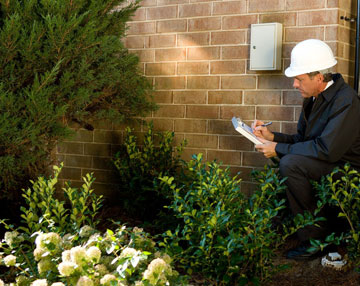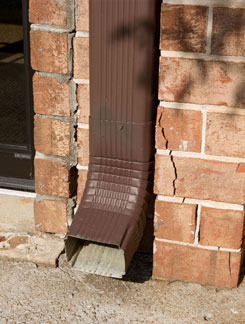Integrated Pest Management

The winter season is under way, and with cool temperatures most of us prefer to stay indoors. Just like us, rodents and other pests are also seeking warmer climates. Even if your doors aren’t always open, pests can still find a way inside your building to escape the winter cold.
Besides the obvious sanitary and health concerns, these intrusions can prove costly. Rodents have been known to cause electrical fires by chewing on electrical wires, and other pests can wreak havoc on structural or plumbing infrastructure. Both are undesirable consequences and can affect enrollment, not to mention what a pest sighting by prospective students or their parents can do to your reputation.
Unfortunately, the winter season does not spare us from an extensive roster of pests. Cockroaches, mice, rats and others are all seeking refuge from the temperature change. Rodents can’t regulate their body temperature, so they prefer to be indoors during the winter. There are also pests like millipedes, crickets and different types of flies, sometimes called occasional invaders, that you may find during this season as well.
The most effective way to combat these pests before they venture indoors is to take preventive action. To help reduce pest threats during the winter months, it is proactive to employ an Integrated Pest Management program. If a pest infestation does occur, you may want to check out something like pest control services Carlisle for a full extermination of your pests.
Preventive, effective and long-term, IPM programs focus on sanitation and facility maintenance to reduce the food, water and shelter sources pests seek. These measures can also help reduce the need for chemical applications at your establishment. Work with your pest management professional to incorporate the following maintenance and sanitation tips.
seek. These measures can also help reduce the need for chemical applications at your establishment. Work with your pest management professional to incorporate the following maintenance and sanitation tips.
 seek. These measures can also help reduce the need for chemical applications at your establishment. Work with your pest management professional to incorporate the following maintenance and sanitation tips.
seek. These measures can also help reduce the need for chemical applications at your establishment. Work with your pest management professional to incorporate the following maintenance and sanitation tips.Facility Maintenance
Trim Landscaping. Depending on your region, landscaping and exterior foliage may not necessarily be top-of-mind in the winter. However, trimming back hedges and clearing out gutters can help keep pest pressure to a minimum. Vegetation and mulch can serve as housing for rodents and other pests, providing a covered and insulated habitat. Keep foliage at least three feet from the building and avoid planting ground-covering plants, such as ivy, that can shelter pests. Talk to your pest management professional about landscaping options that may be less attractive to pests. Fortunately, now is a great time to pick and choose the right landscape design to deter pests from entering your building both now and in the coming spring.
Seal Entry Points. Partner with your maintenance experts to identify and seal any cracks in your building’s windows, ceilings, floors and exterior walls with weather-resistant sealant. Add copper mesh around pipes and drains to prevent rodents from entering around them. Use door sweeps, window screens and weather stripping as protective barriers to prevent pests from crawling inside.
Clear Parking Lots. Sidewalks and parking lots can collect water and trash left by passersby, both of which can attract pests. Regularly walk common areas to remove debris, and eliminate standing water.
Change Lighting. Check lighting on the building and near entrances — make sure to use sodium vapor bulbs, which are less attractive to pests. Install lights at a distance from the building, in areas like the parking lot, to draw pests away.
Sanitation
Keep Clean. Regular vacuuming, sweeping and mopping can help remove dust, debris and food particles that attract pests. It does not take much to feed these pests. Clear clutter and throw out empty boxes that may serve as a hideout for pests.
Reduce Food and Water Sources. Contact maintenance to repair leaking sinks, ice machines or dishwashers. Routinely perform a deep cleaning underneath appliances, tables and other furniture to remove debris in hard to reach places. An organic cleaner can help eliminate grease and grime collected in floor drains.
Remove Trash. Line trash cans to prevent leaks, and use lids to reduce odors that may attract pests. Remove trash regularly and dispose of garbage in a dumpster as far from the building as possible. Regular trash pick-up and upkeep of the areas near your dumpster can help keep pests at bay.
Monitor Storage: Protect your building from stealthy invaders like cockroaches by checking shipments for pests and signs of pest activity. Since the glue in cardboard boxes can be a food source for cockroaches, empty and promptly dispose of unused boxes.
Winter is a great time to meet with your pest management provider to plan your pest management efforts for the year ahead. Remember, it’s always best to take a proactive, preventive approach to keep pests off campus.
Frank Meek, B.C.E., is Technical Director with Orkin, LLC.
